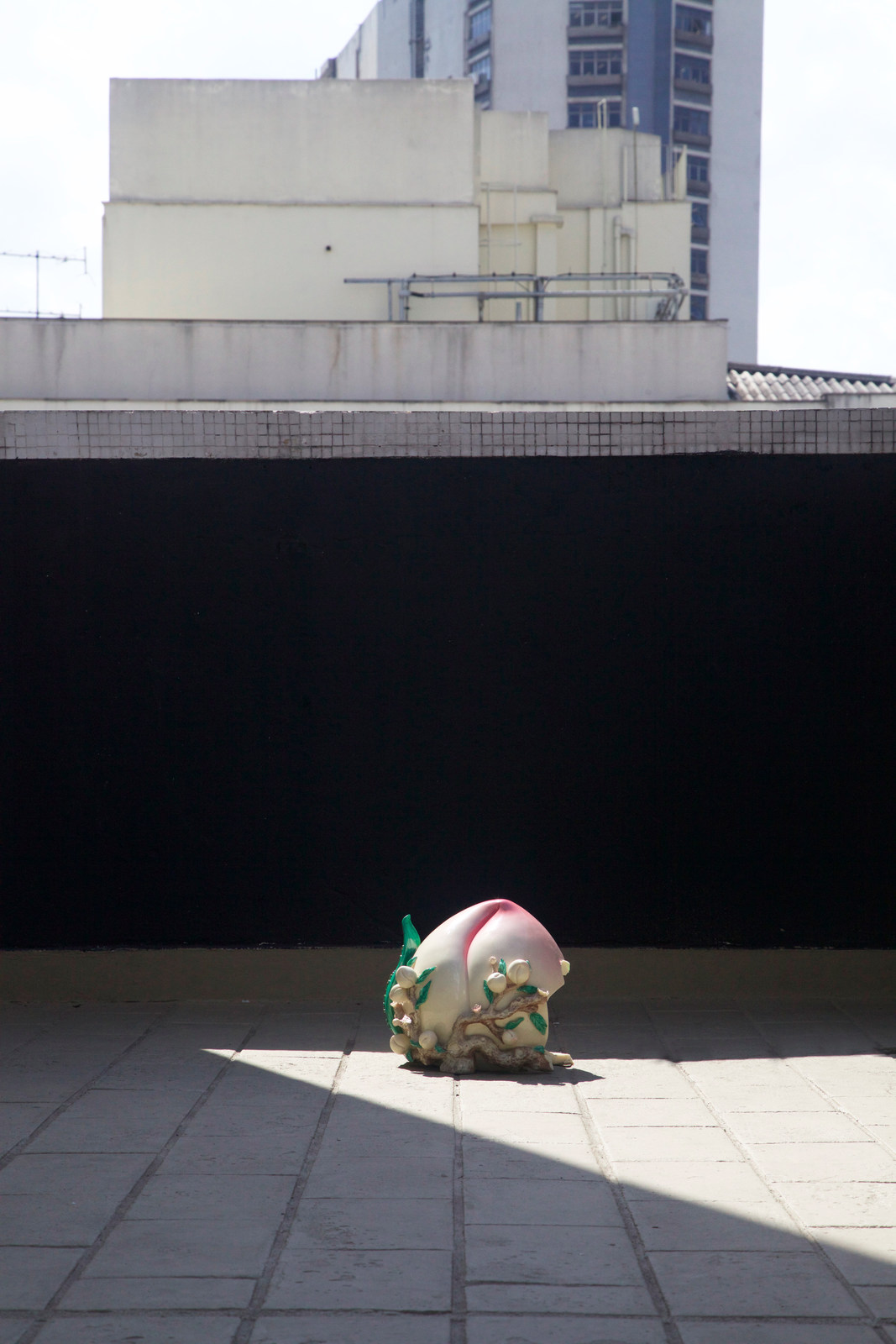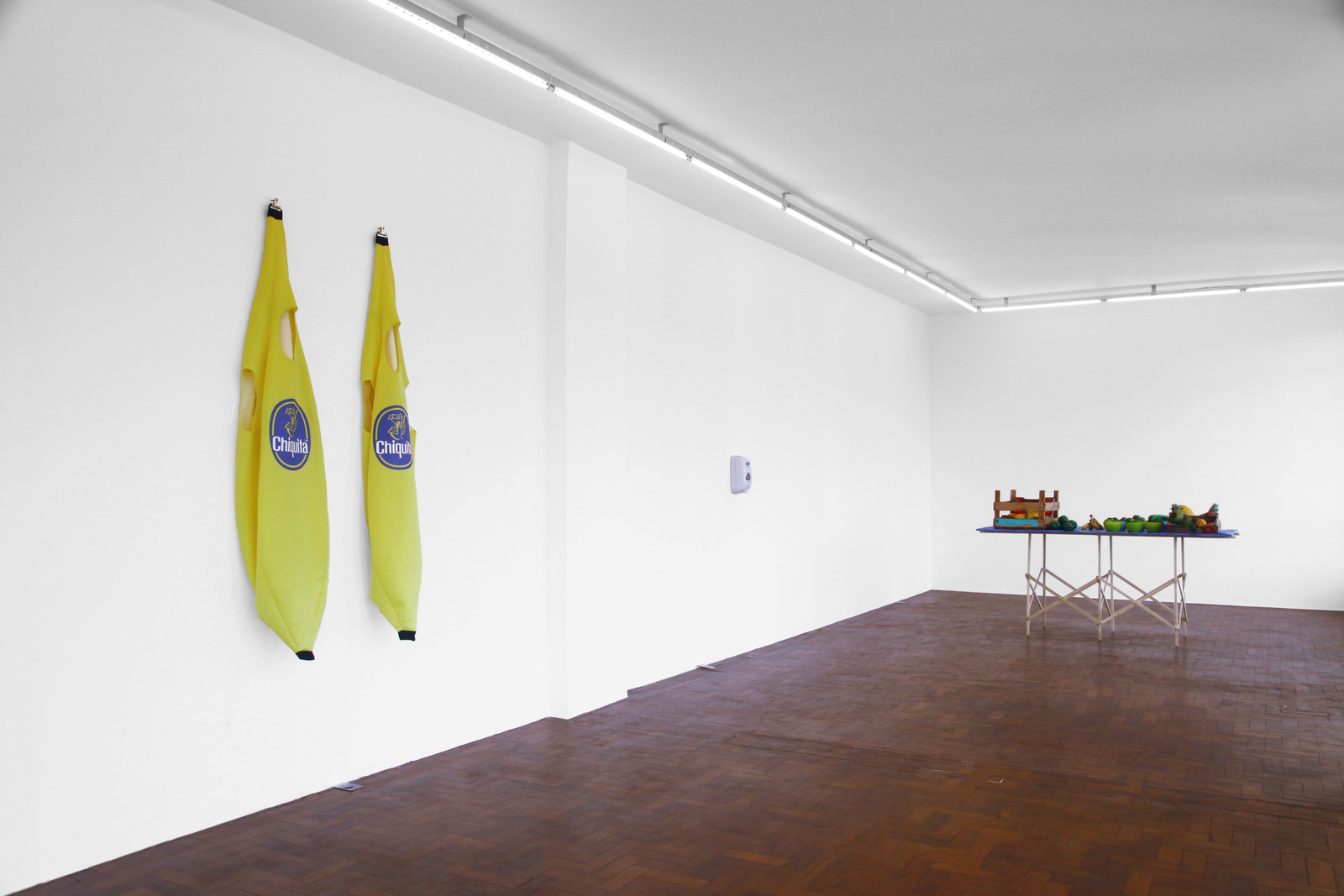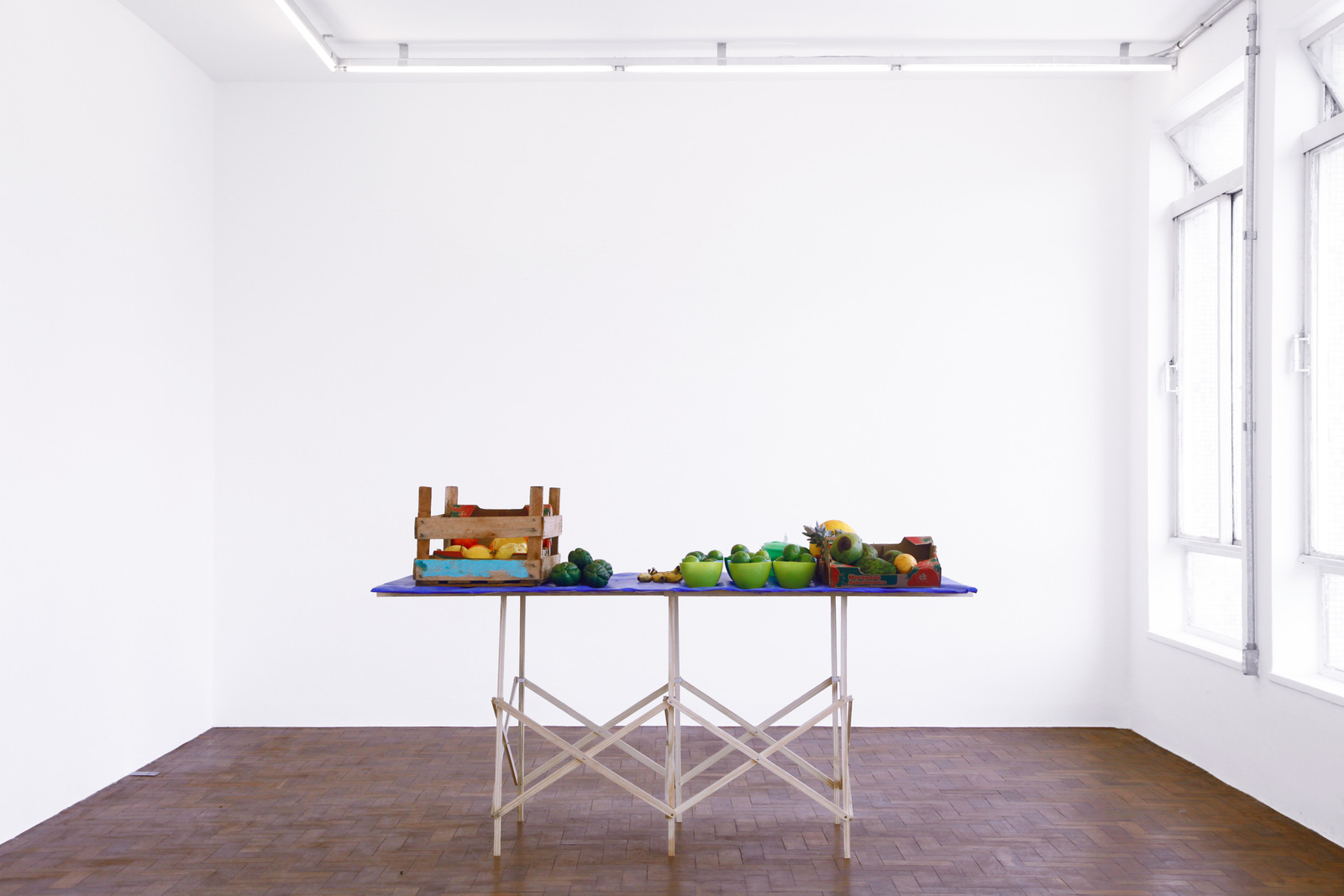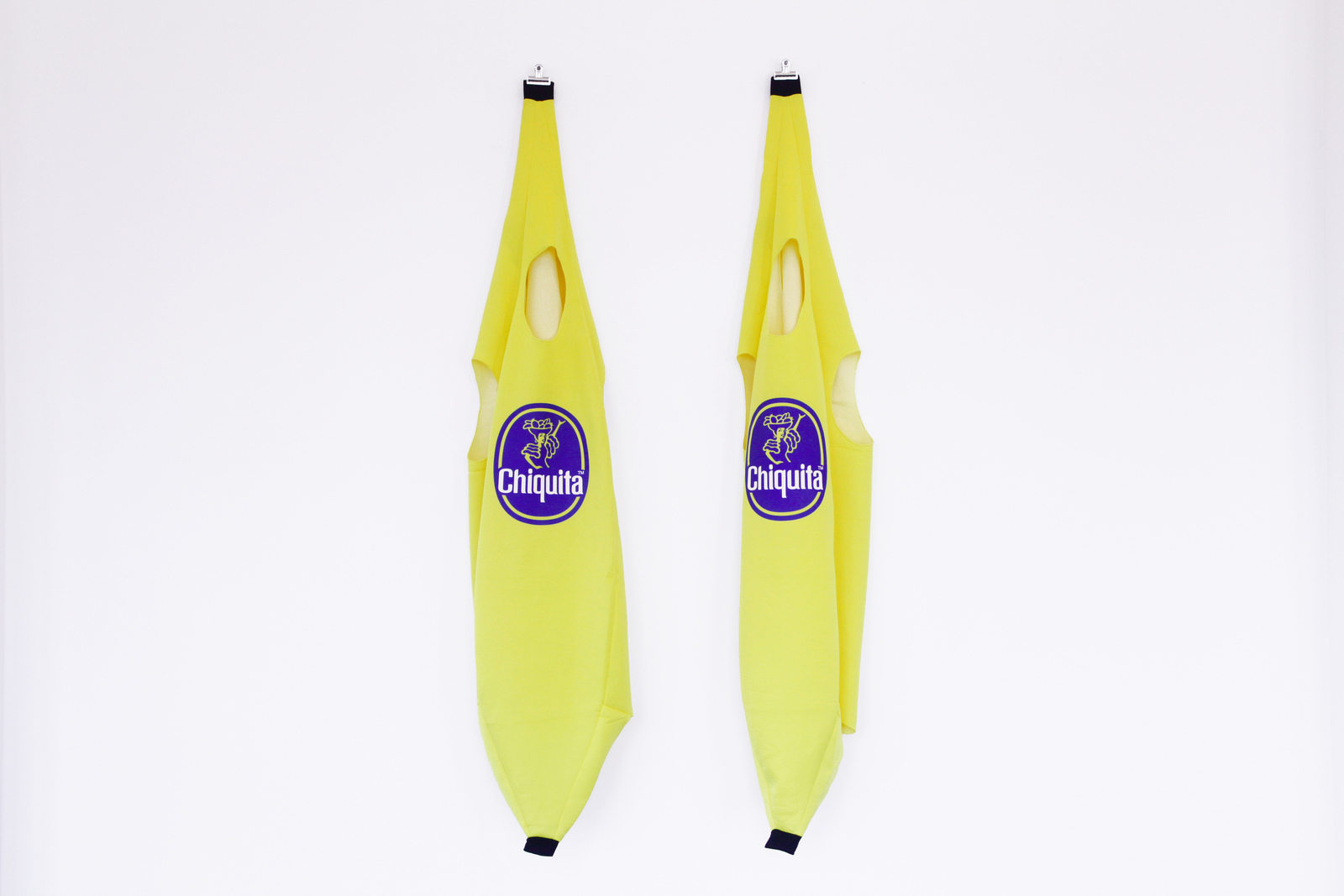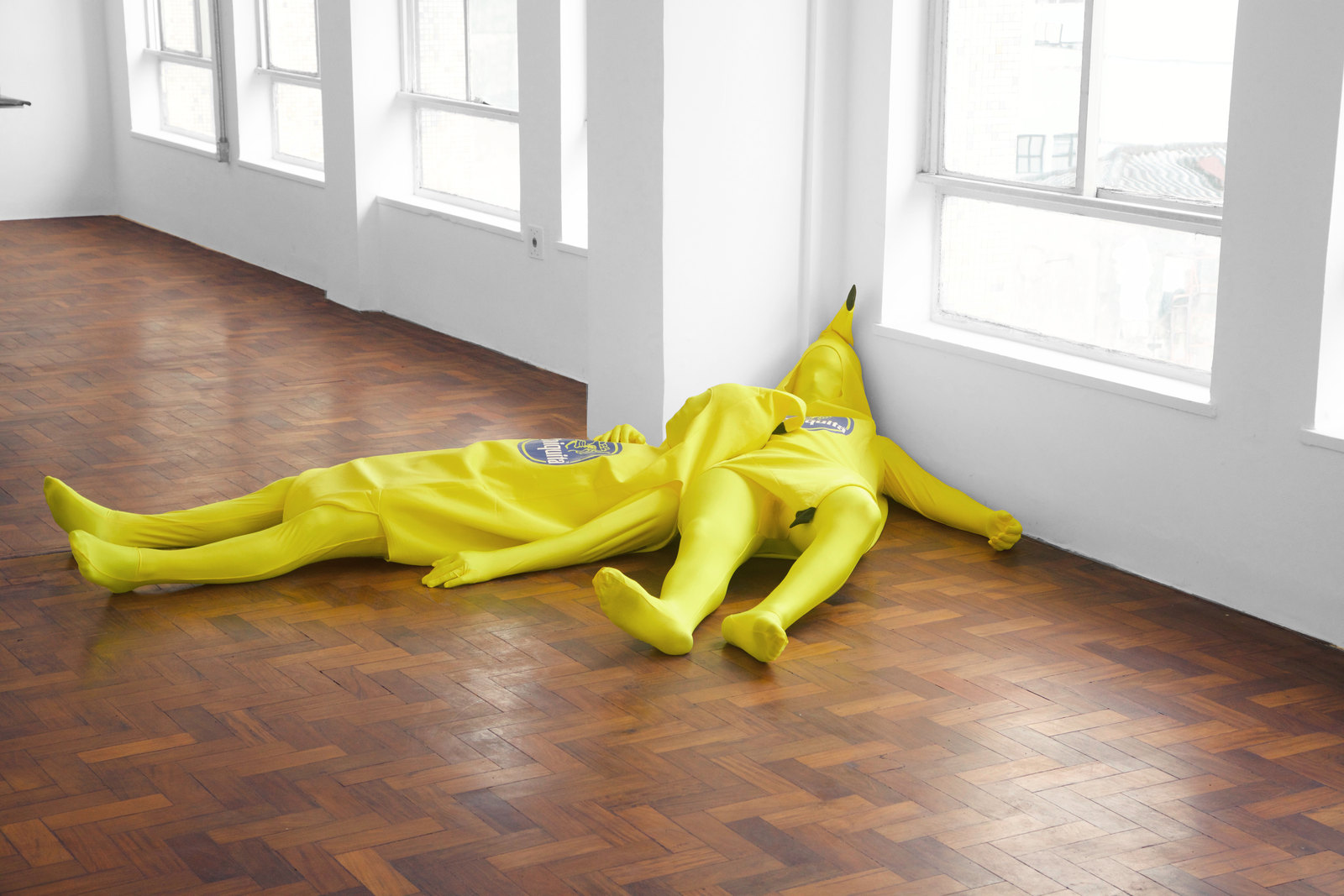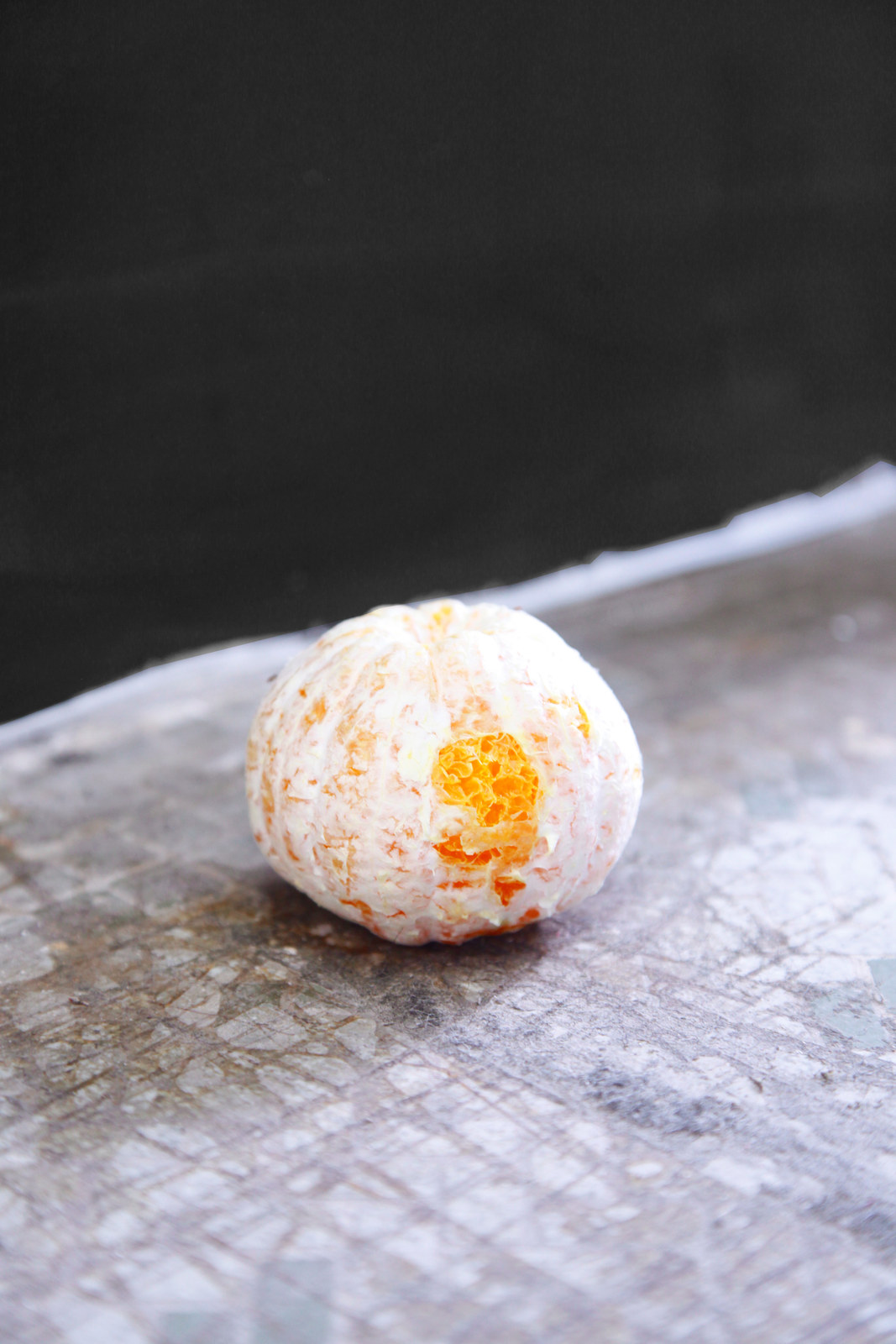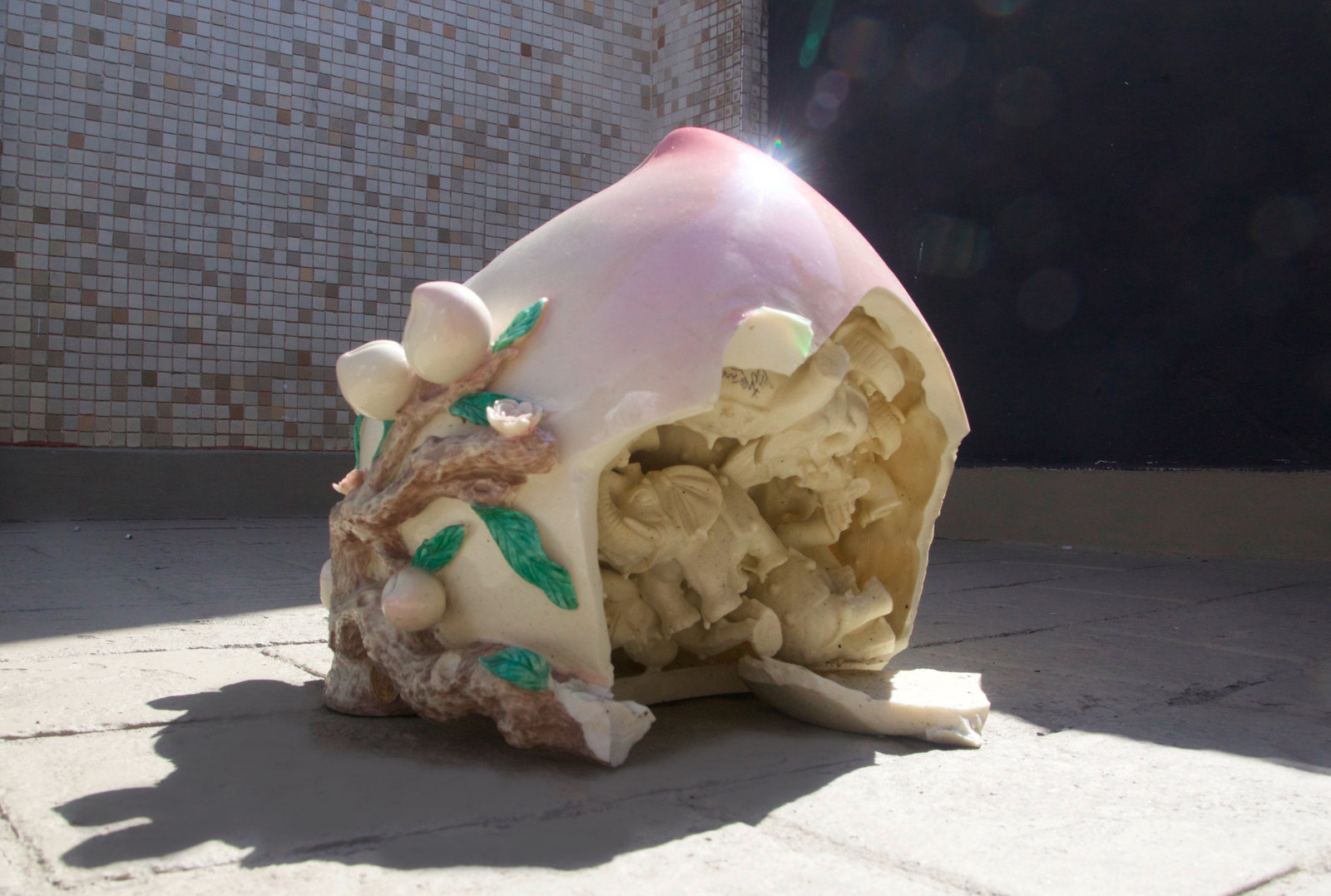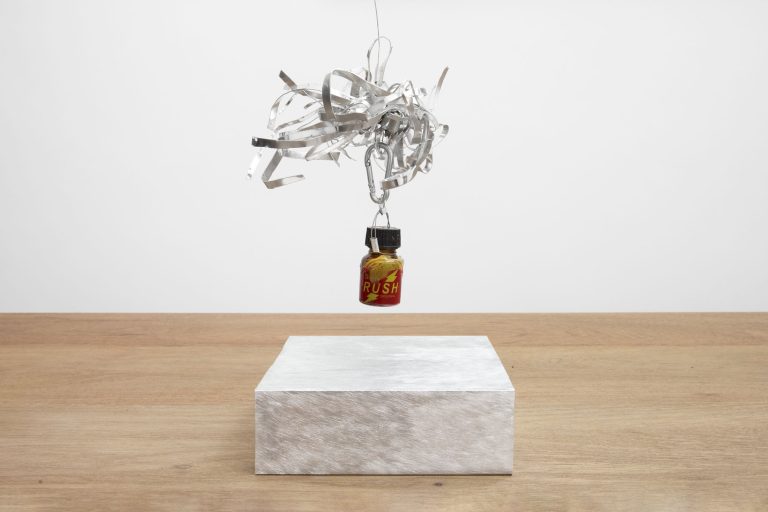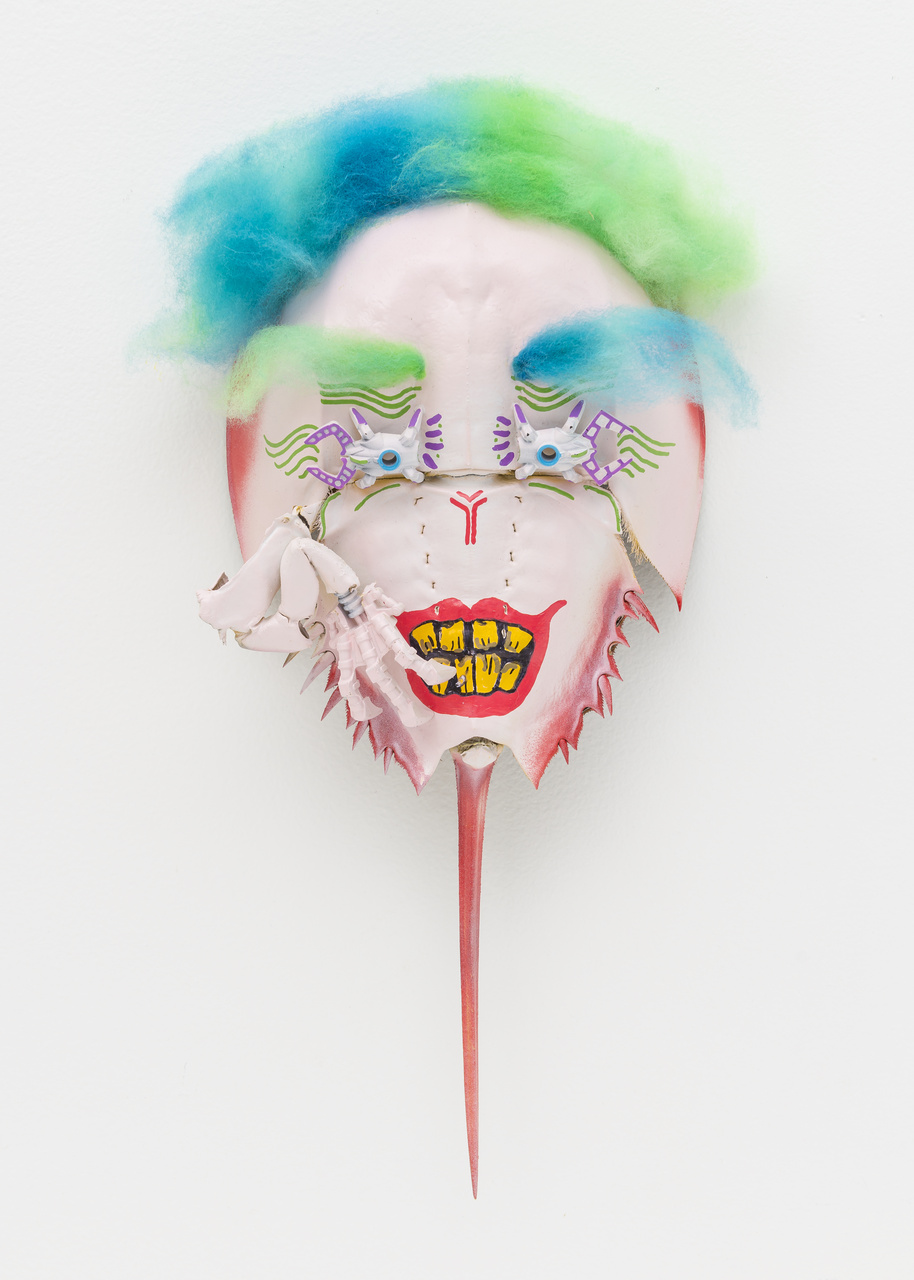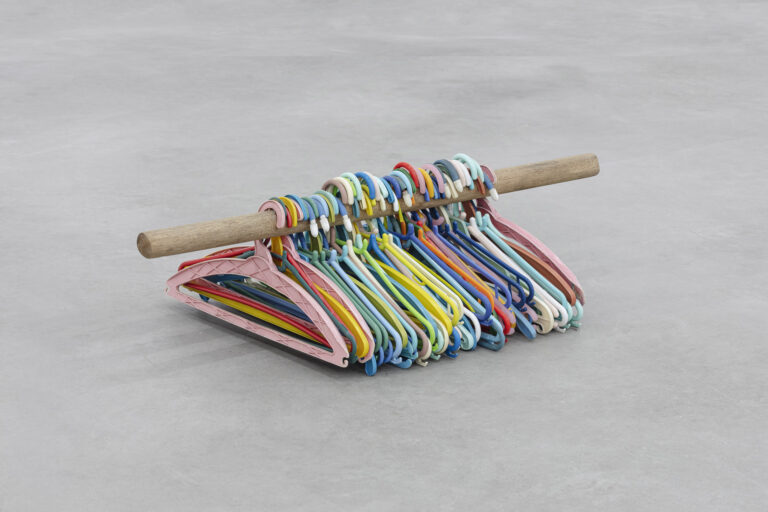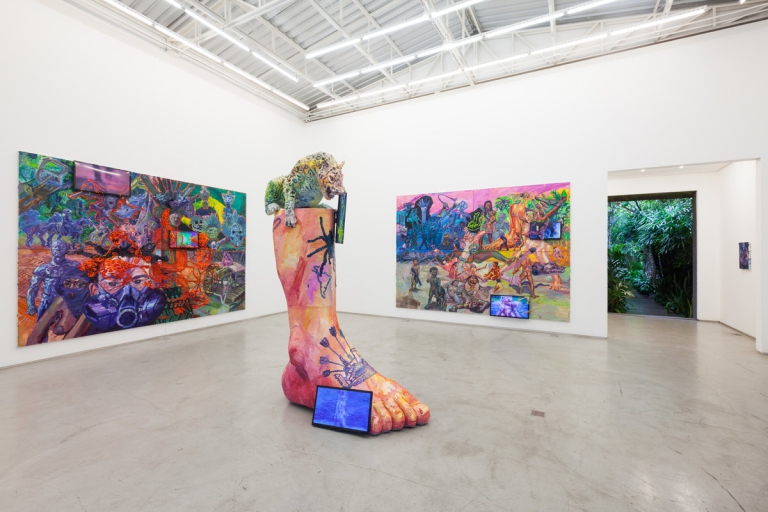Artist: Puppies Puppies
Exhibition title: Fuckin’ Fruit
Venue: BFA, São Paulo, Brazil
Date: September 3 – December 22, 2016
Photography: all images copyright and courtesy of the artist and BFA, São Paulo
The fear is palpable for Gilson Borges Reis, 18, a student in Lauro de Freitas, an industrial city in northeast Brazil. Last month, a cousin who had long taunted him for being gay chased him down the street with a kitchen knife, stabbing him in the chest and arms as relatives watched in horror.
Mr. Reis survived, and the cousin, an evangelical Christian, was arrested. He has been charged with attempted murder, but was promptly released on bail.
The two cousins live on the same street. “He passes my house and flashes me an awful expression,” Mr. Reis said through tears. “I have no protection. I am afraid.”
– “Brazil Is Confronting an Epidemic of Anti-Gay Violence,” by Andrew Jacobs, The New York Times , July 5, 2016.
* * *
Puppies Puppies’ Green Works pair yellow and blue (distinct individuals) and green (their union) as a marker of works bearing some connection to love, and especially to ou r family. The newest Green Work, as of this writing, is Brazilian Flag (blue) (yellow) (green), 2016, an open edition of mass-produced Brazilian flags. An example of this work is included in the exhibition and can be seen through the gallery window, flying over a building close by.
Part of Puppies’ childhood fixation with atlases included careful study of various countries’ flags. Flag design is generally the most reliable contemporary user of explicit color-based symbolism, and is thus a clear precedent for the Green Works. Using simple geometry and color can invoke a complex picture of national values. Just as Felix Gonzalez-Torres’ two touching circles can be understood as homoerotic, within the flag of the United States, “White signifies purity and innocence, Red, hardiness & valour, and Blue … signifies vigilance, perseverance & justice.”
The background of the Brazilian flag is a yellow rhombus floating in the center of a green field. The green represents the House of Braganza, and therefor Dom Pedro I, the first emperor of Brazil, and the yellow rhombus represents the House of Habsburg, and therefor Empress Maria Leopoldina, his wife. A year before his abrupt abdication of the Brazilian throne, and three years after the death of Maria Leopoldina, Dom Pedro I amended the Penal Code in 1830 to remove any references to sodomy, effectively legalizing homosexuality.
Inside the empress’s yellow rhombus, a circle of blue and a scattered field of white stars represent the 27 federated units of the country, arranged as the actual stars in the night sky as seen from Brazil. For much of their time as a gay student in The Netherlands, Puppies Puppies focused exclusively on copying Dutch Vanitas paintings, especially those featuring fruit. A fruit, becoming an individual when separated from its tree (and thus separated from the world), goes through a brief life cycle: maturing to ripened form, and then decaying. Often included alongside even more overt symbols like human skulls, fruit was used to represent the transience of human life. I have always felt this transience most viscerally when looking at the night sky. In particular, a the view many years ago from the McDonald Observatory in Texas, where light pollution is almost completely eliminated, set off a crippling chain of existential panics. The stars in the sky looked like an explosion of flour, and they made me feel nauseous and miserably, devastatingly brief.
The motto of Brazil hangs around the night sky on the flag, Order and Progress. It was adapted from the motto of Auguste Comte’s Positivism, which ascribed physics-like, absolute laws to human society. Comte’s original was longer: Love as a principle and order as the basis; progress as the goal. Positivism later became Comte’s Religion of Humanity, a “secular religion” popularized in the latter part of the 19th century in Brazil by Raimundo Teixeira Mendes, who designed the country’s flag and wrote its motto. He, perhaps ironically, believed that individual nations would eventually cease to exist, and so would wars, because the future would bear out an “irrevocable growth of universal friendship.”
-Forrest
Puppies Puppies, Fruit Stand, 2016
Dimensions variable, Locally available fruit, bowls, wooden crate, cardboard boxes, plastic bags, table
Puppies Puppies, Fruit Stand, 2016
Dimensions variable, Locally available fruit, bowls, wooden crate, cardboard boxes, plastic bags, table
Puppies Puppies, Untitled ( Purell), 2012
Purell antibacterial foam dispenser
Puppies Puppies, Untitled ( Purell), 2012
Purell antibacterial foam dispenser
Puppies Puppies, Double Banana (Blue) (Yellow) (Green), 2016
Dimensions variable, 2 Chiquita banana costumes, 2 yellow bodysuits, performance
Puppies Puppies, Double Banana (Blue) (Yellow) (Green), 2016
Dimensions variable, 2 Chiquita banana costumes, 2 yellow bodysuits, performance
Puppies Puppies, Brazilian Flag(Blue)(Yellow)(Green), 2016
Brazilian flag
Alison Veit, The Art of Dying, 2016
Pastel on canvas, 61 x 46 cm
Puppies Puppies, Orange orange Fly fly, 2016
Peeled orange, live fly
Puppies Puppies, FUCKIN’ FRUIT, FUCKING A FRUIT, 2016
Vinyl text
Puppies Puppies, Immortal Peach (The Peach Stripped Bare of her bachelors, even), 2016
Chinese peach sculpture
Puppies Puppies, Immortal Peach (The Peach Stripped Bare of her bachelors, even), 2016
Chinese peach sculpture

